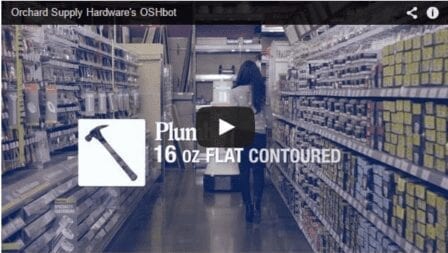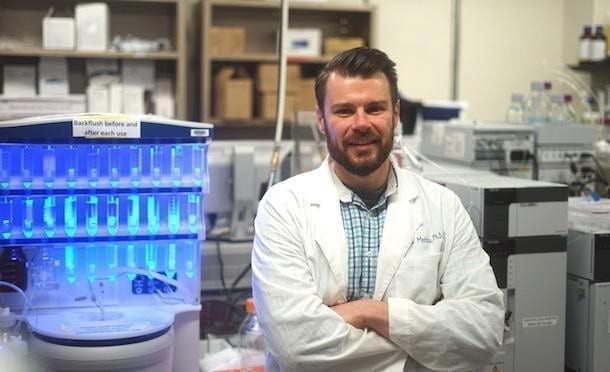
via University of Leeds
International research, involving over 170 experts and led by the University of Leeds, assessed the opportunities and challenges that this cutting-edge technology could have for urban nature and green spaces.
The researchers highlighted opportunities to improve how we monitor nature, such as identifying emerging pests and ensuring plants are cared for, and helping people engage with and appreciate the natural world around them.
As robotics, autonomous vehicles and drones become more widely used across cities, pollution and traffic congestion may reduce, making towns and cities more pleasant places to spend time outside.
But the researchers also warned that advances in robotics and automation could be damaging to the environment.
“As a society, it is vital that we proactively try to understand any possible side effects and risks of our growing use of robots and automated systems.”
For instance, robots and drones might generate new sources of waste and pollution themselves, with potentially substantial negative implications for urban nature. Cities might have to be re-planned to provide enough room for robots and drones to operate, possibly leading to a loss of green space. And they could also increase existing social inequalities, such as unequal access to green space.
Lead author Dr Martin Dallimer, from the School of Earth and Environment at the University of Leeds, said: “Technology, such as robotics, has the potential to change almost every aspect of our lives. As a society, it is vital that we proactively try to understand any possible side effects and risks of our growing use of robots and automated systems.
“Although the future impacts on urban green spaces and nature are hard to predict, we need to make sure that the public, policy makers and robotics developers are aware of the potential pros and cons, so we can avoid detrimental consequences and fully realise the benefits.”
The research, published today in Nature Ecology & Evolution, is authored by a team of 77 academics and practitioners.
Growing use of robotics
The researchers conducted an online survey of 170 experts from 35 countries, which they say provides a current best guess of what the future could hold.
Participants gave their views on the potential opportunities and challenges for urban biodiversity and ecosystems, from the growing use of robotics and autonomous systems. These are defined as technologies that can sense, analyse, interact with and manipulate their physical environment. This includes unmanned aerial vehicles (drones), self-driving cars, robots able to repair infrastructure, and wireless sensor networks used for monitoring.
The Latest Updates from Bing News & Google News
Go deeper with Bing News on:
Robotics and automation
- Two free robotics courses being offered at Tazewell County Career and Technical Center
TAZEWELL COUNTY, Va. (WVVA) - The Tazewell County Career and Technical Center is offering two additional free robotic operator certifications this year. The classes will help students learn automation ...
- Automation supplier plots new HQ in Oakland County
Convergix Automation Solutions is planning to expand with a new Auburn Hills headquarters in a space abandoned by an automotive plastics and foam supplier in bankruptcy. The automation company will ...
- 7 Robotics Stocks to Bet On for Reliable AI-Powered Returns
Investors seeking reliable AI-powered returns should consider robotics stocks. Many companies are leveraging artificial intelligence to create human-like robots. As discomforting as that truth may be ...
- ABB Expands Modular Large Robot Portfolio
ABB Robotics is continuing the expansion of its modular large robot portfolio with the introduction of the new IRB 7710 and IRB 7720. The new robots, combined with recently launched IRB 5710-IRB 5720 ...
- Why Solo Trucking Jobs Could Be Your Best Career Move Robotics & Automation News
(MENAFN- Robotics & Automation News) Exploring the world of trucking jobs can lead to a fulfilling and stable career path. This article delves into why opting for a trucking job could be a fantastic ...
Go deeper with Google Headlines on:
Robotics and automation
[google_news title=”” keyword=”robotics and automation” num_posts=”5″ blurb_length=”0″ show_thumb=”left”]
Go deeper with Bing News on:
Robots and automated systems
- Perrone Robotics Unveils TONY ADAS Kit: Advanced Driver Assistance System for Any Vehicle
May 9, 2024 /PRNewswire/ -- Perrone Robotics ... system (ADAS) is designed to bring cutting-edge safety and driver assistance features to a wide range of vehicles, both new and existing. The TONY ADAS ...
- Robot Operating System Market: Projected Surge to US$ 490.3 Million by 2033, Propelled by a 5.7% CAGR
The worldwide robot operating systems market was worth approximately US$ 249.2 million in 2021. Over the next decade, it is expected to grow at an average annual rate of 5.7%. By 2033, it is ...
- Robots In Healthcare: What's New? Robotics & Automation News
Healthcare robots are transforming medical care by taking on routine tasks, enhancing surgical precision, and offering emotional support to patients.
- Reliable Robotics Delivers KC-135 Stratotanker Automation Roadmap to U.S. Air Force
Reliable Robotics, a leader in safety-enhancing aircraft automation systems, today announced completion of a KC-135 Stratotanker Automation Study for the U.S. Air Force (USAF). The study was ...
- Five Things to Consider Before Adopting Robotics for Warehouse Automation
Modern retailers have an incredible opportunity to futureproof their warehouse operations today, with the goal of increasing efficiency to meet this surging consumer demand.
Go deeper with Google Headlines on:
Robots and automated systems
[google_news title=”” keyword=”robots and automated systems” num_posts=”5″ blurb_length=”0″ show_thumb=”left”]










